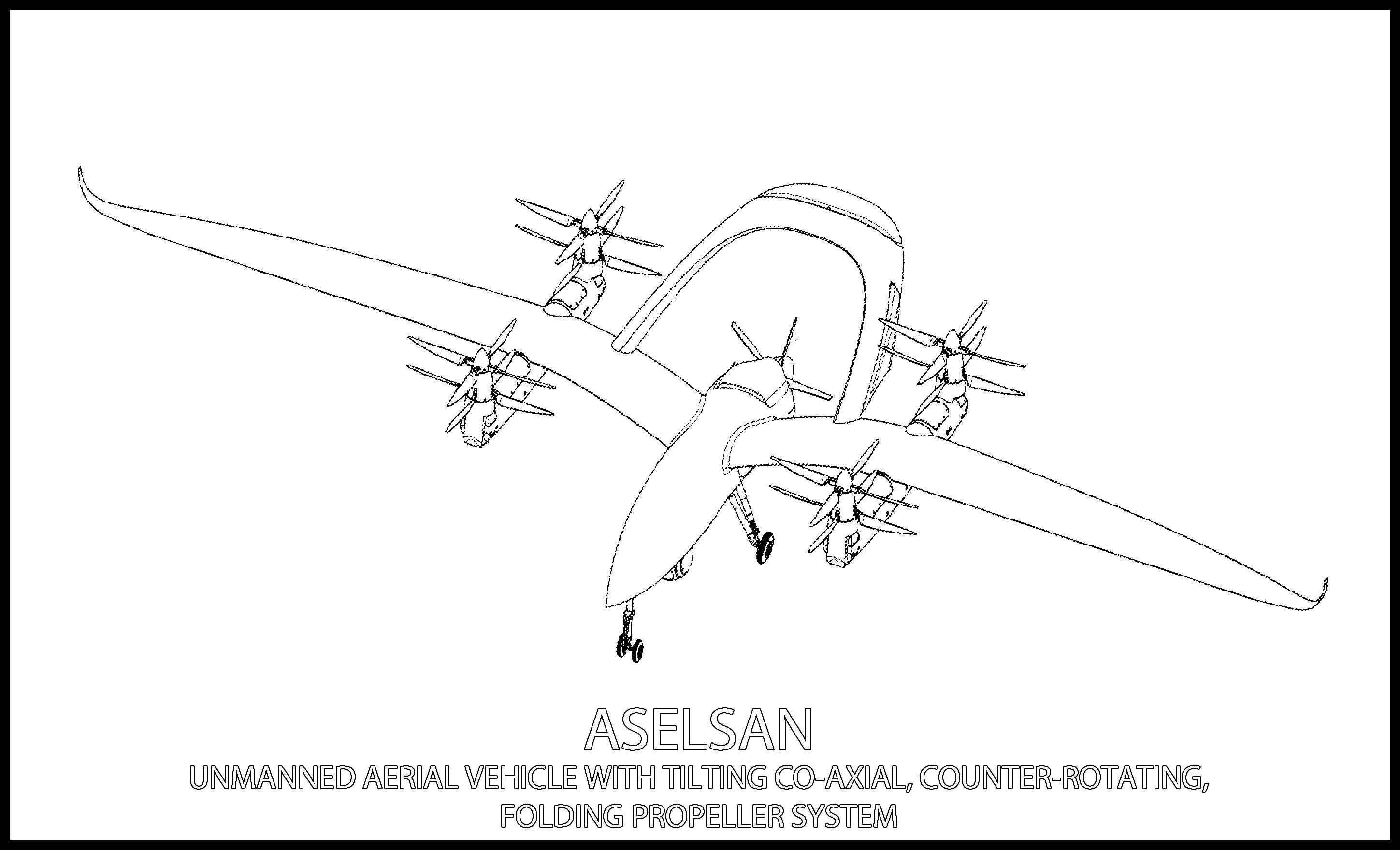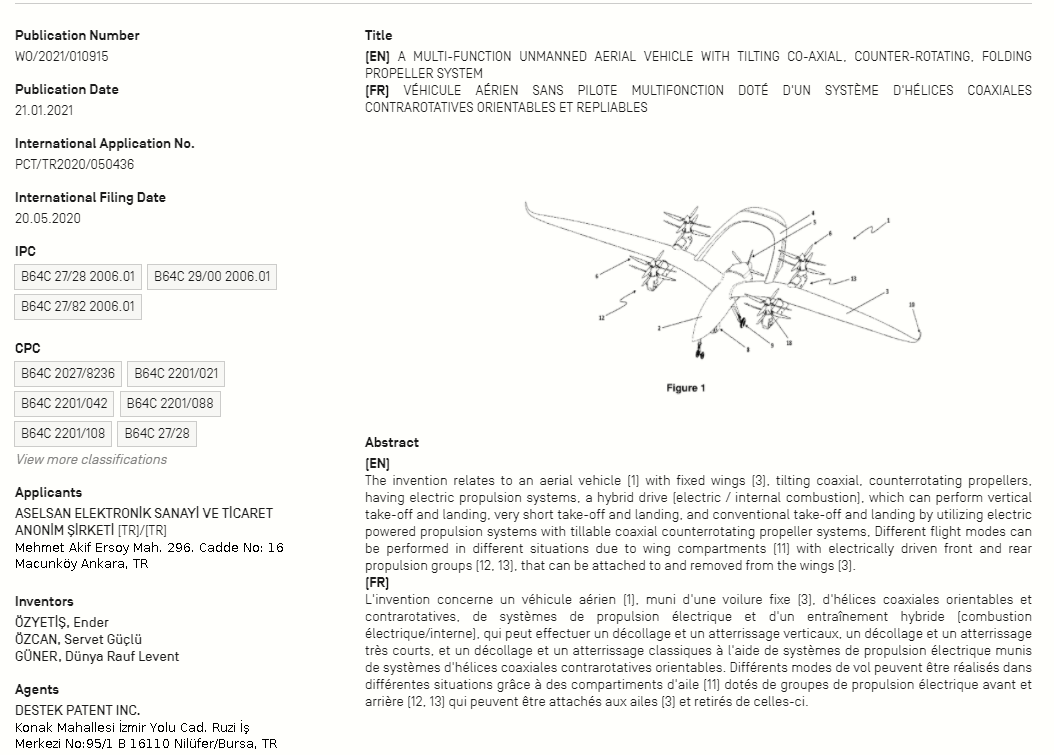The engines TEI are making are pretty good for civilian projects too as they are already developed for harder requirements of the military. They have quite sizable alternators for on board systems and that power can be used to trickle charge batteries in a hybrid system. But our industry is slow to make use of them while hybrid systems using such diesel engines have already started to emerge in the world particularly for the nascent eVTOL air taxi industry.
You are using an out of date browser. It may not display this or other websites correctly.
You should upgrade or use an alternative browser.
You should upgrade or use an alternative browser.
Safran, Honeywell, GE, RR all have such systems now, but the majority of the eVTOL industry want to go fully electric rather than hybrid mostly because of cost issues of turbine systems. However diesel hybrid is a more economic solution which is now gaining some momentum.


Home | VerdeGo Aero
VerdeGo Aero is creating power and propulsion technologies that enable our customers to develop high-performance, reliable, electric aircraft. Our hybrid-electric powerplants solve the critical performance challenges making the electrification of flight practical, useful, and scalable.
www.verdegoaero.com
Combat-Master
Baklava Consumer
Safran, Honeywell, GE, RR all have such systems now, but the majority of the eVTOL industry want to go fully electric rather than hybrid mostly because of cost issues of turbine systems. However diesel hybrid is a more economic solution which is now gaining some momentum.

Home | VerdeGo Aero
VerdeGo Aero is creating power and propulsion technologies that enable our customers to develop high-performance, reliable, electric aircraft. Our hybrid-electric powerplants solve the critical performance challenges making the electrification of flight practical, useful, and scalable.www.verdegoaero.com
Damn, this would be perfect for TB3 !


ASELSAN VTOL has developed hybrid driven UAV
The Purpose of Invention
The invention relates to an unmanned aerial vehicle with internal combustion or electric propulsion, silent flight capability, removable double pod mounted, with tilting 4x2 coaxial counterrotating, folding propeller systems, with dual hybrid (electric / internal combustion and fixed - wing flight / landing) capable of vertical take-off/landing (VTOL), very short runway take-off/landing (VSTOL), conventional take-off/landing (CTOL). With the invention, the advantages of tilt-rotor type systems and hybrid systems are combined. Thus, nine different types of flights become possible.
In the system of the present invention, the coaxial - counter - rotating propeller groups can be held in a horizontal or vertical position by a tilting mechanism, but also at a desired angle. Thus;
• When the front propeller group is placed in a horizontal position, the internal combustion engine, which produces more noise than the electric motor, is switched off and a silent flight, powered with only electricity can be made. Thus, in military applications that require silent observation, silent operation can be carried out for a certain period in the enemy region.
• Thanks to the use of solar panels and electric motor / propeller groups of it on conventional flight, electric powered flight can be made in certain parts of the flight and flight time is increased. This feature is not available in other hybrid UAV systems.
• The generator of the internal combustion motor and solar panels can charge the batteries of the electric motors. In this way, in certain parts of the flight, the internal combustion engine can be stopped and electric powered flight portion can be increased.
• In case of an internal combustion engine failure, it is possible to return to base by performing an electric powered flight for up to an hour with the front electric motors. This feature is not available in other hybrid systems that cannot tilt their engines.
• The system can perform VSTO - Very Short Take - off and very short runway landings in high altitude and hot weather conditions where vertical takeoff and landing can be difficult. For take offs, the front propeller groups are operated in horizontal position to support take off and climb. In very short runway landing, the front electric motors are closed while the rear electric motor group produces effective reverse thrust, reducing the landing distance.
Due to capability of adjustment of the positioning of the motor groups as horizontal or vertical to adopt to the streamline, the drag force encountered in horizontal flight is less than the other hybrid (fixed - wing aircraft capable of vertical takeoff / landing) systems.
The folding propeller groups were made to be opened by electric motor rotation and closed by airflow. Thus, they provide less drag force than other hybrid systems when they are placed in a horizontal streamlined position when not in use, such as in modes where the aircraft is cruising with internal combustion engine power only. Each vertical / horizontal tilting station in the system has coaxial propeller groups with counter - rotation. In this way, the system can continue to operate even if one of the electric motors or propellers is disabled or failed. If two propellers / motors are disabled, the system can continue to operate in certain combinations and can execute emergency vertical landings in each failure combination. Even if all of the electric motors (8 units) are disabled, the system can perform conventional landing on a runway.
The propeller groups with coaxial counter - rotation, provide more thrust per unit station than systems with 4 vertical propulsion groups. In addition, the counter - rotating propeller system is more compact than the propulsion systems that have the same number of single structures, without coaxial counter - rotation motors and propellers. This is advantageous by producing less aerodynamic drag force, especially when the vertical thrust units are not in use such as in cruise phase.
In order to accomplish the above - mentioned objectives, the invention is an aerial vehicle comprising at least two semi - elliptical wings extending on either side of a main body, a tail extending between the wings, a pusher type fuselage propeller positioned at the rear of the main body, a propulsion element located in the main body and powering the fuselage propeller and able to perform very short runway takeoff/landing, conventional takeoff/landing, and vertical takeoff/landing. Air vehicle is further comprising,
I think carefully read the details.
When I read the details I see that they hope to get something from solar panels which is futile, as solar panels can create little electric and their weight is not worth the trouble especially with a VTOL plane.The Purpose of Invention
The invention relates to an unmanned aerial vehicle with internal combustion or electric propulsion, silent flight capability, removable double pod mounted, with tilting 4x2 coaxial counterrotating, folding propeller systems, with dual hybrid (electric / internal combustion and fixed - wing flight / landing) capable of vertical take-off/landing (VTOL), very short runway take-off/landing (VSTOL), conventional take-off/landing (CTOL). With the invention, the advantages of tilt-rotor type systems and hybrid systems are combined. Thus, nine different types of flights become possible.
In the system of the present invention, the coaxial - counter - rotating propeller groups can be held in a horizontal or vertical position by a tilting mechanism, but also at a desired angle. Thus;
• When the front propeller group is placed in a horizontal position, the internal combustion engine, which produces more noise than the electric motor, is switched off and a silent flight, powered with only electricity can be made. Thus, in military applications that require silent observation, silent operation can be carried out for a certain period in the enemy region.
• Thanks to the use of solar panels and electric motor / propeller groups of it on conventional flight, electric powered flight can be made in certain parts of the flight and flight time is increased. This feature is not available in other hybrid UAV systems.
• The generator of the internal combustion motor and solar panels can charge the batteries of the electric motors. In this way, in certain parts of the flight, the internal combustion engine can be stopped and electric powered flight portion can be increased.
• In case of an internal combustion engine failure, it is possible to return to base by performing an electric powered flight for up to an hour with the front electric motors. This feature is not available in other hybrid systems that cannot tilt their engines.
• The system can perform VSTO - Very Short Take - off and very short runway landings in high altitude and hot weather conditions where vertical takeoff and landing can be difficult. For take offs, the front propeller groups are operated in horizontal position to support take off and climb. In very short runway landing, the front electric motors are closed while the rear electric motor group produces effective reverse thrust, reducing the landing distance.
Due to capability of adjustment of the positioning of the motor groups as horizontal or vertical to adopt to the streamline, the drag force encountered in horizontal flight is less than the other hybrid (fixed - wing aircraft capable of vertical takeoff / landing) systems.
The folding propeller groups were made to be opened by electric motor rotation and closed by airflow. Thus, they provide less drag force than other hybrid systems when they are placed in a horizontal streamlined position when not in use, such as in modes where the aircraft is cruising with internal combustion engine power only. Each vertical / horizontal tilting station in the system has coaxial propeller groups with counter - rotation. In this way, the system can continue to operate even if one of the electric motors or propellers is disabled or failed. If two propellers / motors are disabled, the system can continue to operate in certain combinations and can execute emergency vertical landings in each failure combination. Even if all of the electric motors (8 units) are disabled, the system can perform conventional landing on a runway.
The propeller groups with coaxial counter - rotation, provide more thrust per unit station than systems with 4 vertical propulsion groups. In addition, the counter - rotating propeller system is more compact than the propulsion systems that have the same number of single structures, without coaxial counter - rotation motors and propellers. This is advantageous by producing less aerodynamic drag force, especially when the vertical thrust units are not in use such as in cruise phase.
In order to accomplish the above - mentioned objectives, the invention is an aerial vehicle comprising at least two semi - elliptical wings extending on either side of a main body, a tail extending between the wings, a pusher type fuselage propeller positioned at the rear of the main body, a propulsion element located in the main body and powering the fuselage propeller and able to perform very short runway takeoff/landing, conventional takeoff/landing, and vertical takeoff/landing. Air vehicle is further comprising,
I think carefully read the details.
Also the configuration is in serial hybrid and electric motors are used for the sake of silent flight.
Electric conversion from fossil fuel will add weight, another not worth the weight proposition especially for VTOL.
No parallel hybrid no benefit. Parallel hybrid requires no electric conversion but requires a wise propulsion design with shafts instead of cables.
Ways to go.
If Turkish drones continue to destroy Russian SAMs at a likely Ukrainian conflict, Russian systems will lost all credibility and respectability in global arm market. I am sure they are now working hard to find a way to neutralize Turkish drones.
Combat-Master
Baklava Consumer
I'm not so hopeful that TB2 will be as effective against Russia as it was in other theatres;If Turkish drones continue to destroy Russian SAMs at a likely Ukrainian conflict, Russian systems will lost all credibility and respectability in global arm market. I am sure they are now working hard to find a way to neutralize Turkish drones.
My reasoning is that Russia will have the means to update and upgrade their air defences... Ukraine may not be able to on hand develop different techniques to communicate with Tb2 in an attempt by Russia to deploy electronic warfare systems.. Also, Russia may deploy aircraft.. we've seen Russian aircraft down Georgian drones...
We are talking about a full-scale battle here. When Bayraktar TB-2 is used in Libya, when Hafter's aircraft came to the region, we could not use them in a comfortable way. If Ukraine loses air superiority, it will be very difficult to use Bayraktar TB-2.I'm not so hopeful that TB2 will be as effective against Russia as it was in other theatres;
My reasoning is that Russia will have the means to update and upgrade their air defences... Ukraine may not be able to on hand develop different techniques to communicate with Tb2 in an attempt by Russia to deploy electronic warfare systems.. Also, Russia may deploy aircraft.. we've seen Russian aircraft down Georgian drones...
MALE class UAVs are cheap and efficient CAS and ground strike tool but in order for them to be used effectively against a conventional force first EW umbrella and air superiority should be obtained. There are two options for that: One is trough air superiority fighters and another is trough preemptive strike on airfields with bunker buster and anti-runway/taxi warheads delivered by different platforms.
Looks like Aksungur has the same type of SAR radar dome on the belly as the ANKA.
With SAR the situational awareness and tracking of targets will increase immensely.
That could mean that one SAR drone can find targets and a bunch of other drones following, be it ANKA or TB2 take out those targets with higher effectiveness.
Finding the target is half of the job.
With SAR the situational awareness and tracking of targets will increase immensely.
That could mean that one SAR drone can find targets and a bunch of other drones following, be it ANKA or TB2 take out those targets with higher effectiveness.
Finding the target is half of the job.
Combat-Master
Baklava Consumer
Looks like Aksungur has the same type of SAR radar dome on the belly as the ANKA.
With SAR the situational awareness and tracking of targets will increase immensely.
That could mean that one SAR drone can find targets and a bunch of other drones following, be it ANKA or TB2 take out those targets with higher effectiveness.
Finding the target is half of the job.
Is this capability possible with SAR radars ? I could see a bunch of flying missile racks loaded with MMW seekers engaging multiple targets, while "mother ship" with radar is giving firing solutions for them
I guess that capability is possible with Akinci's mutli-mode AESA radar..
What are the issues with aselsan cats? To small production line?
Combat-Master
Baklava Consumer
What are the issues with aselsan cats? To small production line?
Yes, production capacity for CATS is the issue. Before it was 2 per month, not sure if they managed to increase it since..
Here sounds like he's saying 'ayda 4' - so perhaps increased to 4 per month..
Investment of $ 1 Billion for Bayraktar TB-2
I guess the deal is being signed with Ethiopia.
Combat-Master
Baklava Consumer
Investment of $ 1 Billion for Bayraktar TB-2
I guess the deal is being signed with Ethiopia.
Let's wait for confirmation lol
Unbelievable, for one country to invest this much.
Investment of $ 1 Billion for Bayraktar TB-2
I guess the deal is being signed with Ethiopia.
Are you saying it would be fortunate if Baykar were stipulated to use Turkish made components from the beginning.Unfortunately these words were never used for Baykar who likes to use foreign products since the beginning.
We have consoled ourselves telling that Baykar has done that for simplicity, using commercial alternatives, and to reduce prices and being more competitive.
What components would you find suitable for Baykar to use and why?
GNSS-GPS, CATS, Engine.Are you saying it would be fortunate if Baykar were stipulated to use Turkish made components.
What components would you find suitable for Baykar to use and why?
What else should we list here? I don't know, you guys know better than me about foreign parts in Bayraktar TB2.
I am telling we should have equal basis to all companies. While BMC hasn't proven me wrong about my attitude being against them i am still in favor they are developing and being the hub for land -diesel engines and gearboxes, even through ToT or licensed production.
Last edited:






